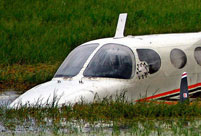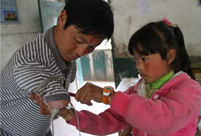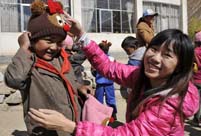More and more intellectual and cultural products in Tibetan are appearing. There are 14 Tibetan-language magazines and ten Tibetan-language newspapers in Tibet. Tibet People's Radio has 42 programs and columns in Tibetan (including Khampa); its Tibetan-language news channel broadcasts 21 hours a day, and its Khampa channel broadcasts 18 hours a day. Tibet TV Station has a Tibetan-language channel broadcasting 24 hours a day. In 2012 some 780 titles of books in the Tibetan language were published in the Tibet Autonomous Region, with a total of 4.31 million copies.
In addition, the use of Tibetan is becoming more and more IT-based. Computer coding of Tibetan characters has met the national and international standards. Tibetan editing, laser phototypesetting and electronic publishing developed independently by China are extensively applied. Through the Internet, mobile phones and other means, Tibetans can read, listen to and watch domestic and international news and get all types of information, which has become part of their daily life.
While preserving and developing the Tibetan language, the State also popularizes standard Chinese around the country, including in regions inhabited by ethnic minorities. According to the Law on the Standard Spoken and Written Chinese Language, "the State popularizes modern standard Chinese and standardized Chinese characters" and "every Chinese citizen has the right to learn and use the standard spoken and written Chinese language" so as to "promote economic and cultural exchanges between ethnic groups and regions." In addition, "The use of the standard spoken and written Chinese language should help maintain state sovereignty and national dignity, safeguard state unification and national unity, and promote socialist material, cultural and ethical progress." In China, no individual or organization shall oppose the popularization, study and use of standard spoken and written Chinese language on the pretext of protecting and developing the language and script of their ethnic group.
Preserving and carrying forward outstanding cultural heritages
Cultural relics and historic sites have been effectively preserved in the Tibet Autonomous Region, which has issued the Notice of the Tibet Autonomous Region People's Government on Strengthening the Protection of Cultural Relics, and Regulations of the Tibet Autonomous Region on the Protection of Cultural Relics, and some other laws and regulations to ensure that cultural relics are protected in accordance with the law and due procedures. Currently, Tibet has 4,277 cultural relics sites (including 55 state-level ones and 210 regional ones), and 2.32 million items of cultural relics are in their collection. The Potala Palace, the Norbulingka and Jokhang Temple are on the World Heritage List. Lhasa, Shigatse and Gyangtse are honored as State-level Historical and Cultural Cities. Tibet Museum is a state-level museum. Since 2000 the Central Government has invested 2.04 billion yuan in key projects for the preservation and maintenance of cultural relics in Tibet, among which more than 380 million yuan has been used in the three key projects of the Potala Palace, Norbulingka and Sakya Monastery.
The region's intangible cultural heritage has been effectively preserved, promoted and developed. The Regional People's Government and local prefectural (city) governments have set up special organizations to salvage, collate and study the Tibetan cultural heritage, making a general survey of the cultural and artistic heritage of the Tibetan group. These organizations have edited and published Chronicles of Chinese Dramas: Tibet; Collection of Folk Dances: Tibet; Collection of National Instrumental Folk Music: Tibet, and seven other collections, including over 10,000 pieces of folk music, songs and other art forms and over 30 million characters of literary data. Currently, Tibet has nearly 800 intangible cultural heritage projects, over 80 performance troupes of traditional dramas and 1,177 inheritors of such intangible cultural heritage. Tibetan opera and the Gesar epic have been included in UNESCO's Masterpiece of the Intangible Heritage of Humanity. Tibetan Thangka, Tibetan papermaking technique and 73 other cultural items have been included in China's Masterpiece of the Intangible Heritage, and 68 inheritors of such cultural items have been affirmed as representative inheritors of China's Intangible Heritage projects; 323 projects and 227 inheritors have been put on the Tibet Regional List of Intangible Heritage; and 158 books have been put on the State List of Valuable Ancient Books. The Ministry of Culture and Tibet Autonomous Region have named five places as national homes of folk art, 19 as regional homes of folk art, and two as homes of special art.
 |  |
 No news of survivors in Lao Airlines crash
No news of survivors in Lao Airlines crash Five fighters in flight training
Five fighters in flight training London mayor hails free trade, subway system on China tour
London mayor hails free trade, subway system on China tour Different eye catching shows at housing fairs in China
Different eye catching shows at housing fairs in China Chalk it up to great courage
Chalk it up to great courage Tibetan girl helps mobilize volunteers onlin
Tibetan girl helps mobilize volunteers onlin Lingerie show dazzles Wuhan Motor Show 2013
Lingerie show dazzles Wuhan Motor Show 2013  Chinese screen goddesses from Beijing Film Academy
Chinese screen goddesses from Beijing Film Academy  Weekly Sports Photos
Weekly Sports Photos Bayi Parachute Team of PLA Air Force
Bayi Parachute Team of PLA Air Force World has never been dark-- a blind kid’s life in Tibet
World has never been dark-- a blind kid’s life in Tibet Change to law may make it easier to sue polluters
Change to law may make it easier to sue polluters UNESCO world heritage site: Montale Tower
UNESCO world heritage site: Montale Tower U.S. Senate leader announces bipartisan deal
U.S. Senate leader announces bipartisan deal Fiber-optic wedding dress show shinning in Suzhou
Fiber-optic wedding dress show shinning in Suzhou Day|Week|Month